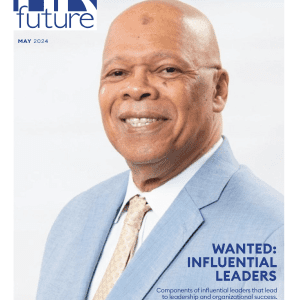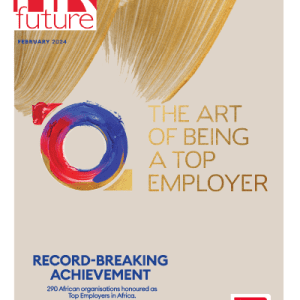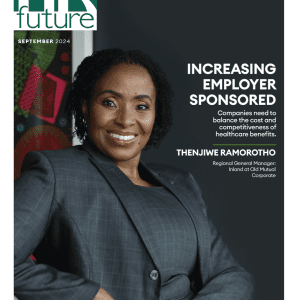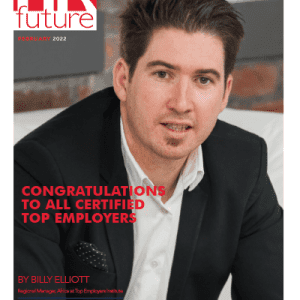AI is going to change the definition of work.
As the CEO of LinkedIn, I think a lot about how to connect the world’s professionals to help them become more productive and successful. That’s been LinkedIn’s mission from the start, which means that, while we may be a technology company, we’re actually in the people business, helping you grow your networks, your knowledge, your skills and your companies.
It’s no surprise then, that almost everywhere I go these days, someone invariably asks me the same questions: “What is happening with AI and work, and what does it mean for me?” With that in mind, I want to share my view of what’s happening, what it means for each of us and the ways that LinkedIn – as a platform and as a community – can help us all better understand and manage a moment of change that will fundamentally alter how we build careers and companies.
AI is starting to usher in a new era for work. Most immediately, AI will start to change how we work, taking on more and more of the drudgery we like least in our days. Things like helping with the first draft of an outreach email, or doing the first check for errors in a budget document. But that’s just the start. Over the coming years, AI is also going to change the very definition of work. At LinkedIn, we’re already starting to see that play out as we look at the new skills that employers are adding to job postings and that members are adding to their profiles.
As you would expect, AI-related skills like machine learning are on the rise, and companies are increasingly looking for AI-related talent – for example, the share of job postings on LinkedIn mentioning GPT or ChatGPT has increased by 21X since November 2022. But – and this is what I’m paying most attention to right now – there is also an increase and demand in soft skills such as communication and flexibility. In fact, 72% of US Executives agree that soft skills are more valuable to their organization than AI skills.
This signals an exciting possibility, one where people skills become more essential to individual success and where people-to-people collaboration becomes more essential to company success. I believe we are in the early days of a world of work that is more human than before, giving us the chance to do more fulfilling work, and to do that work more easily and effectively with others.
Work in the age of AI
For two decades now, LinkedIn has been the place where talent and opportunity meet. When this happens at massive scale, hundreds of millions of people all over the world find new jobs, learn new skills, make new connections, and launch new careers and companies. As we look ahead at the next chapter, we have both an opportunity and a responsibility to help the world understand and manage the changes that widespread adoption of AI at work will bring to how people build careers and companies.
And this is precisely where we are investing to help, making it easier for everyone to understand and find opportunity in the three main changes to work I see coming:
- AI will accelerate workforce learning, and heighten the importance of skills;
- AI will facilitate collaborative innovation and bridge communication gaps across cultures, geographies, and industries; and
- AI will reshape the definition of a career path.
AI will accelerate workforce learning and heighten the importance of skills
People access economic opportunity mainly through jobs. And for generations, the way we’ve defined jobs is by job titles. As AI starts to change how we work, it’s going to force us to change how we define jobs. Instead of job titles, we all need to start seeing any job as a collection of tasks, and understand that those tasks will change regularly as AI continues to advance. The best way to stay on top of – or better yet, get ahead of – job changes will be with a skills-first mindset.
Take your current job as an example. Put aside your job title for a minute and instead break your job into the top tasks that you do every day, and then bucket those tasks in the following ways:
- Tasks AI can fully take on for you, like summarizing meeting notes or email chains;
- Tasks AI can help improve your work and efficiency, like help writing code or content; and
- Tasks that require your unique skills – your people skills – like creativity and collaboration.
With a skills-first mindset, you can start to see what skills you need to stay competitive in the job you have, or, if most of the tasks in your job fall in that first bucket, what new skills you need to get to move into new roles or even a new career. Jobs are changing on you, even if you’re not changing jobs.
And while that’s been true for some time – with the average LinkedIn member having seen the skills needed for their job change by 25% over the past eight years – AI is going to meaningfully accelerate that pace of change. By our latest estimates, that number is expected to reach at least 65% by 2030.
This level of change means that skills-first thinking matters for employers as well as employees. Bringing a skills-first approach to the center of talent management is the surest way to expand your talent pools, upskill your current employees, and build agility into your workforce.
Those who will be the most successful in jobs in the age of AI are going to be the agile ones that embrace growth as a virtuous cycle: your growth, through learning and development, fuels company growth while company growth, through innovations in business strategies and cross-functional collaboration, fuels your growth.
We recognize this, and it’s why building AI into our talent products isn’t new for us. We’re constantly making improvements so that those of you hiring can attract the best possible candidate with the right skills for the role. Here are some examples of how we’re doing that:
- We recently launched Skills Match within LinkedIn Recruiter so that recruiters can see candidates’ whose skills match the roles they are hiring for. And Resume Search automatically pulls relevant skills from a candidate’s resume into Recruiter.
- We’ve also used AI to update our recommended matches feature in Recruiter, enabling those of you hiring to see real-time, personalized recommendations based on your hiring activities, candidates’ job-seeking activities, and key information from job posts – helping you discover up to 10% more new and qualified candidates.
And we also have tools for those of you looking to grow your skills:
- LinkedIn Learning has more than 21,000 courses that can help you learn the skills you need to acquire, taught by the best instructors in the world, and easily accessible anywhere and anytime. This includes more than 300 AI courses, including a free Generative AI Professional Certificate learning path. As you learn new skills, add them to your profile to get connected to the growing and changing opportunities.
- Another way to learn and collaborate on LinkedIn is through our community. Our members possess a mind-blowing 10 billion years of professional experience. And we’re unlocking that knowledge through collaborative articles – AI-powered conversation starters developed with our editorial team that are matched with relevant experts who contribute their lessons, anecdotes, and advice based on their professional experience.
- We also have experts across industries sharing their knowledge on LinkedIn that you can follow, engage with, and learn from. For example, if you want to learn more about AI, follow experts like Bernard Marr, Cassie Kozyrkov, Greg Coquillo, Morgan Cheatham, Allie Miller, and Tomasz Tunguz. And check out our recent editorial coverage, including more top voices to follow, on what the rise of AI means for workers and how it’s already changing key industries.
Next month, Part Two will look at how AI will facilitate collaborative innovation and bridge communication gaps across cultures, geographies and industries.
Ryan Roslansky is the CEO at LinkedIn based in the San Francisco Bay area, California, US.



























